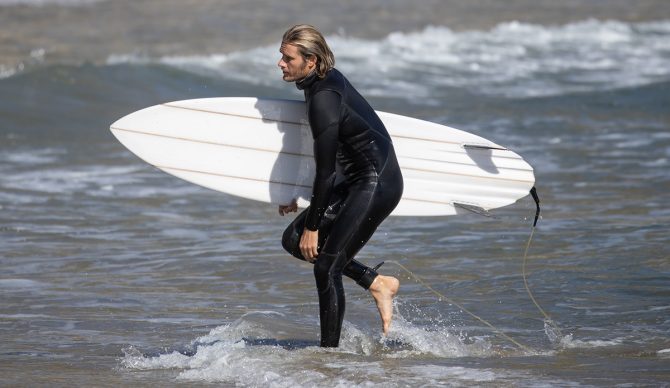
Mr. Torren Martyn of course has experienced none of these symptoms. He’s most likely more sure of himself than the average surfer.
You’re probably aware of the Kübler-Ross model (not the Mayhem flat decked 6’10’’) that states that those experiencing grief go through five emotions: denial, anger, bargaining, depression and acceptance.
Devised in the 1960s, the model has been recently discredited. Modern research indicates that while these emotions are a part of the process of grieving and dying, they are not linear, and often all occur at once. And yet it remains a well-quoted part of the cultural fabric. It also has many other applications. Also known as The Change Curve, there is of course the arc that allows us to trace the stages a surfer navigates on the way to riding a mid-length. The new theory goes like this and actually has six stages.
Denial
The first reaction is denial. In this stage, individuals believe the diagnosis is somehow mistaken, and cling to a false, preferable reality. This will often take the form of surfers clinging on to their progressive surfboard dimensions, meaning their board’s volume is writing checks that their increased weight and age can’t cash. Some may also isolate themselves, avoiding others who may have accepted what is happening. Here a surfer might stick to his favorite pounding shorebreak, aggressively dismissing the cowardice of his friends surfing the softer, longer point option.
Anger
When the individual recognizes that denial cannot continue, they become frustrated, especially at proximate individuals. “Why me? It’s not fair!” are common surfer refrains, especially after a painful nosedive. “How can this happen to me?”; “Who is to blame?”; “Why would this happen?” Are other violent laments as the surfer’s wave count decreases in direct correlation with their sense of well-being.
Bargaining
In the third stage, the surfer clings to the hope that they can avoid the cause of grief. In case of terminal illness, an extended life is negotiated in exchange for a reformed lifestyle. In surfing terms, they vow to get fitter, surf more, eat better and do yoga, which are seen as viable attempts that will negate the move to the mid-length.
Depression
During the fourth stage, the individual despairs at recognizing their surfing mortality. In this state, the individual may become silent, refuse visitors, and spend much of the time mournful and sullen. They can often be found watching re-runs of their favorite surf vids when they were frothing 20-year-olds. Thin, tri-fins gather dust in the garage, wetsuits go stiff with a lack of moisture, and the good old days are invoked, often with a beer chaser. At breakfast.
Acceptance
“It’s going to be okay.”; “I can’t fight it so I may as well prepare for it.”
In this last stage, individuals embrace mortality or their inevitable future. It will start with watching a whole Torren Martyn movie, following Devon Howard on Instagram, and eventually scanning the mid-length models on the Channel Island website.
This stage typically comes with a calm, retrospective view of the individual and a stable condition of emotions. A mid-length purchase will be entertained, then made.
(And Joy!)
This is where the Kübler-Ross model ends, with the finality of death. And yet for the Mid-Length Change Curve, there is a last stage – JOY. As the surfer paddles with newfound ease into a beautiful glassy wave, sets his trim level to maximum and glides down the line with more speed and control than he has had for a decade, all the anger, denial, and depression is forgotten. They carve out a path to true enlightenment.

